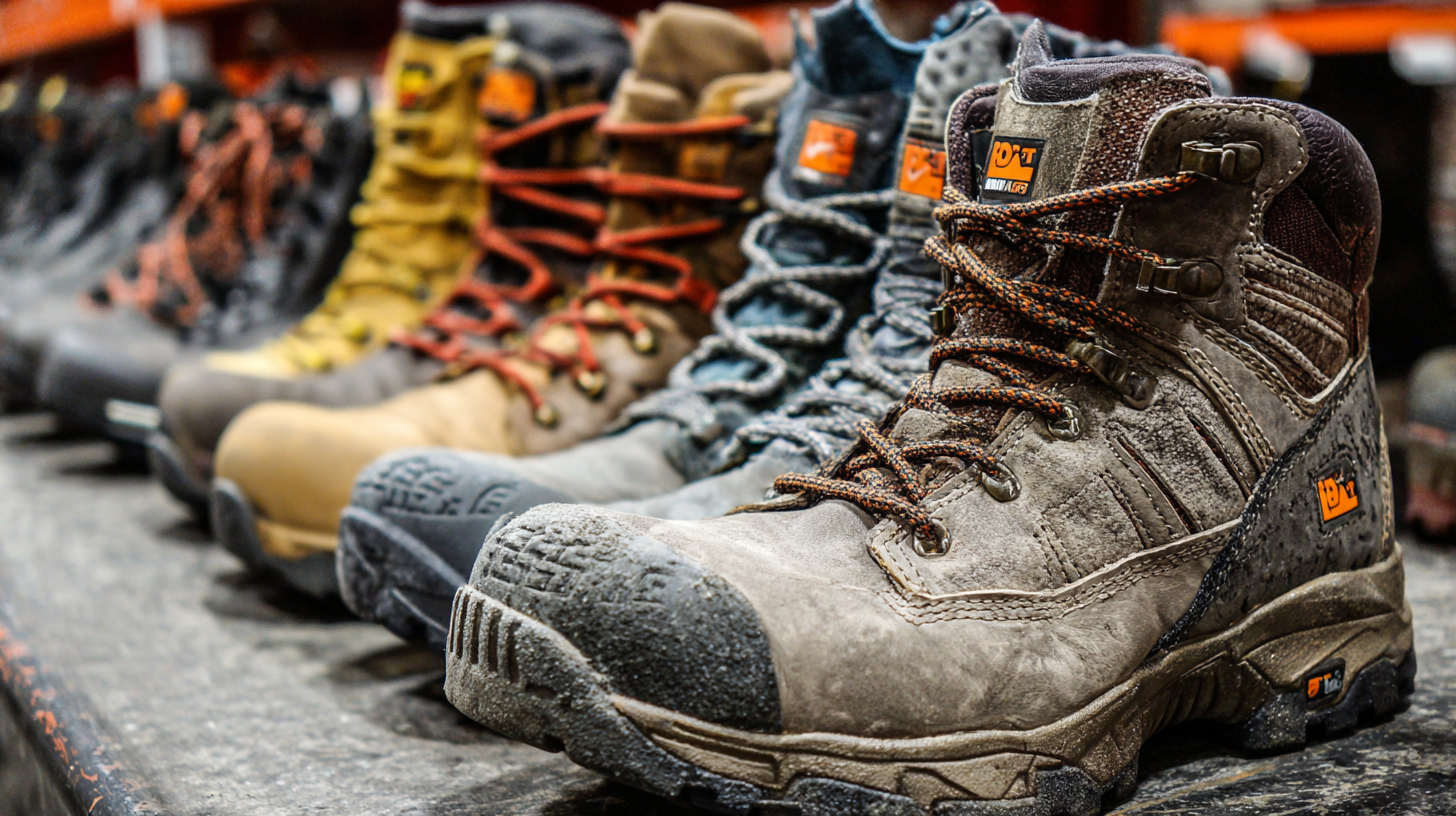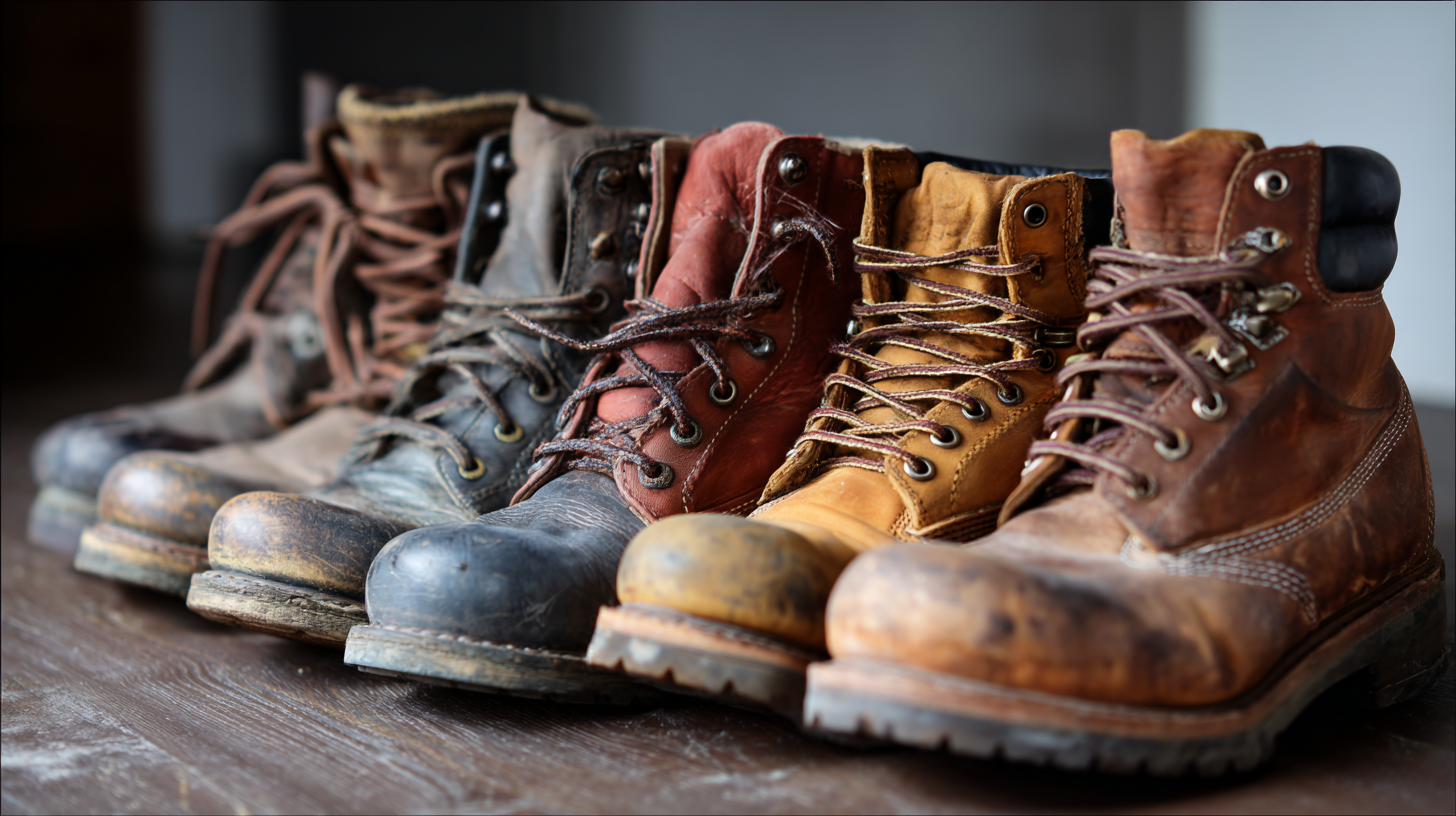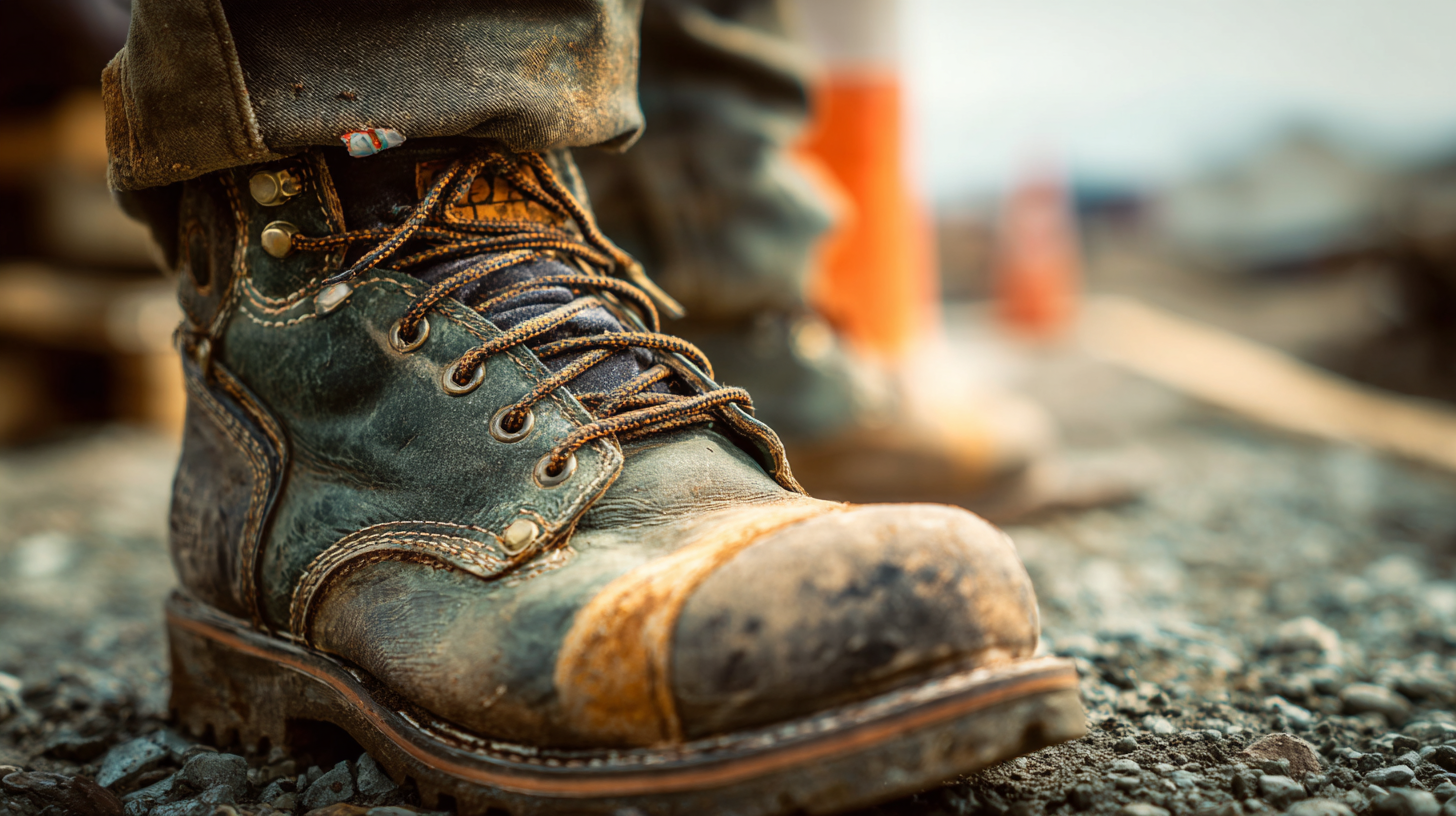10 Essential Tips for Choosing the Best Work Boots for Your Global Workforce
In the global marketplace, the importance of selecting the right work boots cannot be overstated, especially when considering the diverse needs of a multifaceted workforce. According to a recent report by the Occupational Safety and Health Administration (OSHA), improper footwear contributes significantly to workplace injuries, with roughly 70,000 incidents related to slips, trips, and falls occurring annually in the United States alone. As companies strive to maximize productivity and ensure safety, understanding the features and applicability of different types of work boots becomes crucial. From steel-toe boots designed for heavy industry to waterproof variants for outdoor work, each type serves a specific purpose that aligns with the varied requirements of workers across sectors. Choosing the right work boots not only enhances individual safety but also boosts overall morale and efficiency within a global workforce.

Understanding the Importance of Quality Work Boots in Workforce Safety and Productivity
Choosing the right work boots is crucial for ensuring the safety and productivity of your workforce. Quality work boots not only protect employees from potential hazards but also enhance their overall comfort and efficiency during their work hours. Investing in well-designed footwear can mitigate risks such as slips, falls, and injuries, creating a safer work environment. Consider styles that offer both safety features and comfort to make long hours bearable for your team.
When selecting work boots, one essential tip is to prioritize safety ratings. Look for boots that comply with industry standards, including slip-resistant soles and steel toes. Additionally, consider the specific needs of your workforce; for instance, workers in wet or hazardous environments may require specialized waterproof or insulated boots. Another key factor is fit. Poorly fitting boots can lead to discomfort and decreased productivity, so it’s vital to provide employees with the opportunity to try on different sizes and styles.
Finally, educate your workforce about the importance of proper boot care and maintenance. Implementing regular inspections and cleaning routines can extend the life of the boots and ensure they continue to provide adequate protection. When employees understand the role quality work boots play in their safety, they’re more likely to appreciate and maintain their footwear, ultimately contributing to a safer and more productive work environment.
10 Essential Tips for Choosing the Best Work Boots for Your Global Workforce
Key Factors in Selecting Work Boots that Meet Industry Standards and Regulations
When choosing work boots for your global workforce, it's essential to prioritize industry standards and regulations. Different industries have specific requirements regarding safety footwear, and understanding these can help ensure the protection and compliance of your employees. For instance, construction workers may need steel-toed boots to guard against heavy falling objects, while those in the electrical sector might require boots with electrical hazard ratings. It's crucial to assess the unique risks associated with each job role and select footwear that adheres to the relevant regulations, such as OSHA or ANSI standards, to minimize injury risks.
Beyond adherence to safety standards, comfort and fit are vital for maintaining worker morale and productivity. Ill-fitting boots can lead to discomfort, fatigue, and even injuries. It's advisable to consider the diverse foot shapes and sizes within your workforce by providing a range of sizes and widths. Additionally, features such as moisture-wicking liners and cushioned insoles can enhance comfort, making it easier for employees to perform their tasks efficiently. By focusing on both compliance and comfort, you can ensure your workforce remains safe and effective on the job.

Evaluating Supplier Reputation and Reliability for Your Global Workforce Needs
When selecting work boots for a global workforce, evaluating supplier reputation and reliability is crucial. The complexities of a multi-tier supply chain require companies to partner with suppliers who not only deliver high-quality products but also adhere to social and environmental standards. Recent studies have highlighted tensions within supply chains, emphasizing the importance of ethical practices and transparency. Companies must prioritize suppliers with established credibility and a commitment to sustainability, as these elements contribute to a robust supply chain that meets both operational needs and corporate responsibility goals.

In the current competitive landscape, the process of supplier evaluation should include a holistic assessment of their practices and reliability. Organizations can leverage various tools and methodologies to identify suppliers that demonstrate strategic alignment, technological integration, and trustworthiness. By investing time in thorough supplier evaluations, companies can mitigate risks and foster long-lasting partnerships that ultimately enhance e-commerce delivery performance. A reliable supplier not only improves the procurement process but also supports the sustainability objectives that are becoming increasingly vital in today’s global economy.
Analyzing Material Durability: How to Identify Long-lasting Work Boots
When selecting work boots for a global workforce, one of the crucial factors to analyze is material durability. The longevity of work boots depends significantly on the quality of the materials used. High-grade synthetic fibers and rubber can enhance resistance to wear and tear, while also providing necessary safety features. Studies have shown that work boots made from advanced materials exhibit improved performance in terms of both durability and comfort, reducing the risk of workplace injuries due to fatigue or foot strain.
Tip 1: Look for work boots that incorporate lightweight materials. Traditional heavy boots may lead to discomfort and fatigue over extended periods. Opting for lighter alternatives not only ensures all-day comfort but also supports better mobility on the job site.
Tip 2: Check for environmental sustainability in material selection. The latest trends highlight the importance of eco-friendly materials, which not only meet durability standards but also address environmental concerns linked to their production. Prioritizing work boots with a certified carbon footprint can ensure both performance and a lower ecological impact.
By focusing on these key criteria, companies can better equip their workforce with reliable and durable work boots suited for various environments.
10 Essential Tips for Choosing the Best Work Boots for Your Global Workforce - Analyzing Material Durability: How to Identify Long-lasting Work Boots
| Boot Type | Material | Durability Rating (1-5) | Weight (lbs) | Water Resistance | Slip Resistance | Price Range |
|---|---|---|---|---|---|---|
| Steel-Toe Boots | Full-grain leather | 5 | 3.5 | Yes | High | $120 - $200 |
| Composite-Toe Boots | Synthetic materials | 4 | 2.8 | Yes | Medium | $100 - $180 |
| Soft-Toe Boots | Nubuck leather | 3 | 2.5 | No | Low | $90 - $150 |
| Electrical Hazard Boots | Leather and rubber | 4 | 3.2 | Yes | Medium | $130 - $210 |
| Insulated Boots | Leather with insulation | 4 | 4.0 | Yes | Medium | $130 - $220 |
Cost vs. Value: Making Informed Decisions on Investing in Work Boots for Employees
When investing in work boots for your global workforce, understanding the cost versus value is crucial. A recent joint study highlights that consumers increasingly prefer products that demonstrate social responsibility and sustainability, which can significantly influence purchasing decisions. Businesses that integrate ethical practices into their supply chain often find that their products experience enhanced market performance. This trend underlines the importance of not just focusing on initial costs, but also on the long-term value that quality work boots bring to employee safety and productivity.
To navigate the decision-making process, consider these tips:
- First, assess the specific needs of your workforce based on their job functions. For instance, construction workers may require heavy-duty boots while those in healthcare might prioritize comfort and slip resistance.
- Secondly, look for boots that offer superior durability and comfort, as evidenced by studies indicating that investing in higher-quality footwear can reduce workplace injuries and improve employee satisfaction.
- Finally, don’t overlook the importance of a manufacturer’s commitment to social responsibility, as it can resonate with your employees and enhance your company’s brand image.
Through these considerations, you are likely to make more informed investments in work boots that provide lasting value.
